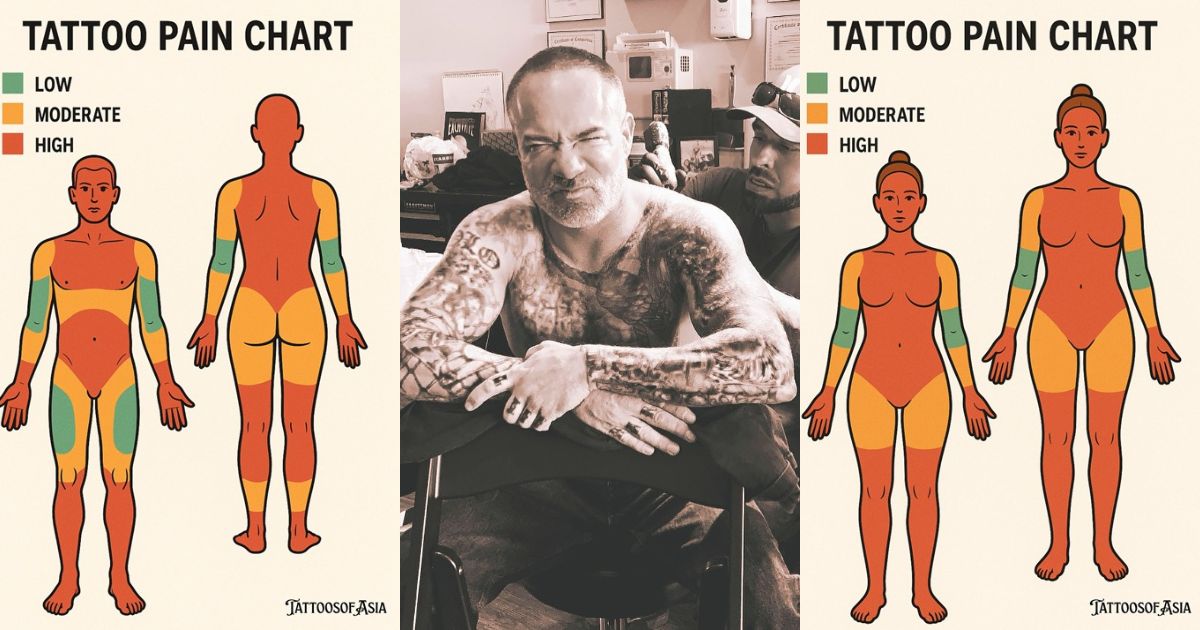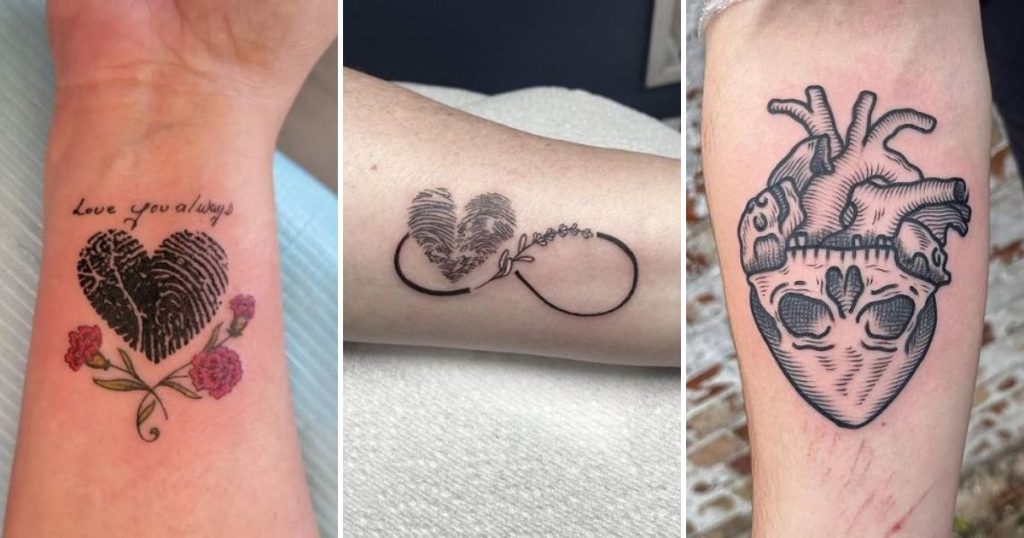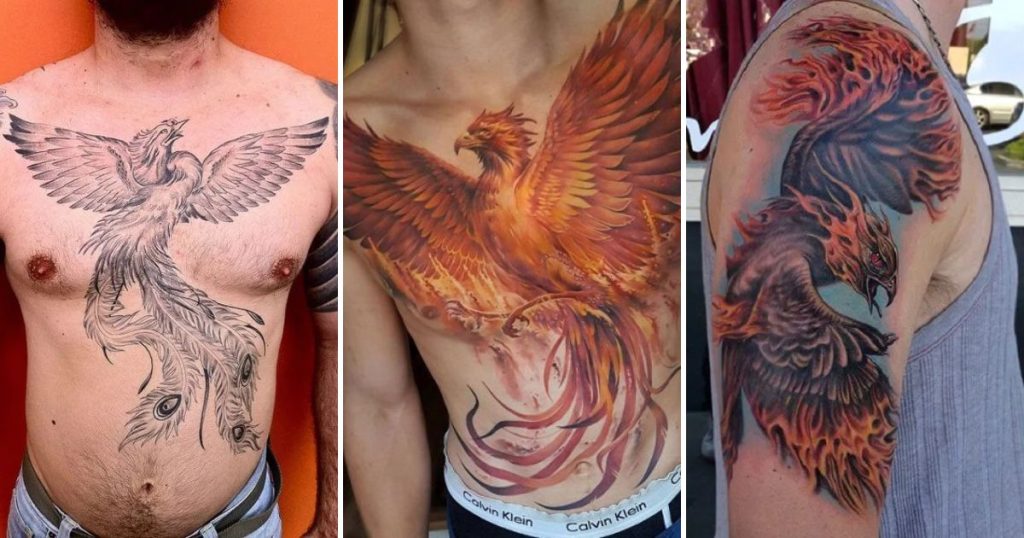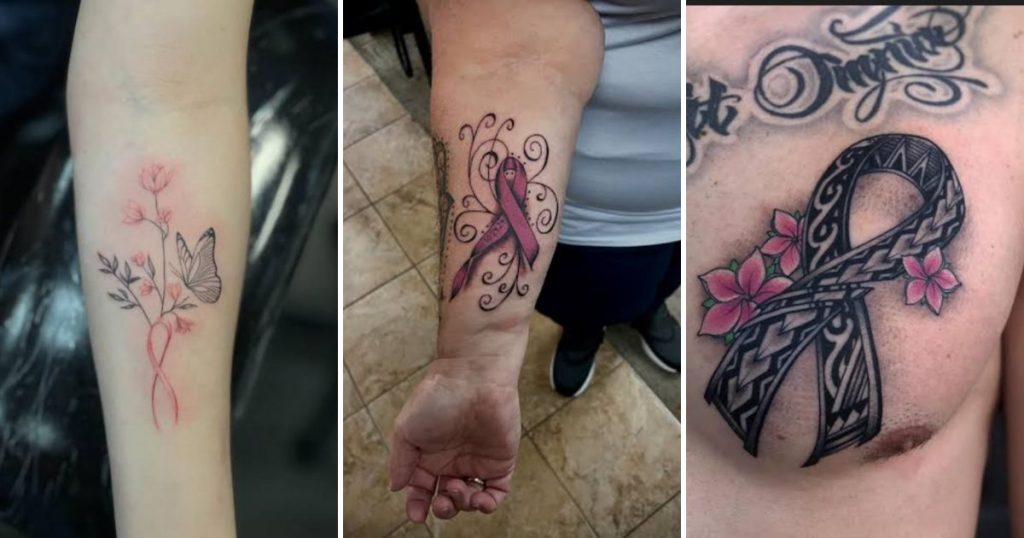Don’t have any idea how much an ink might hurt you? Don’t worry; we’ll clarify everything with our tattoo placement pain chart!
Planning your first (or fifth) tattoo? One thing that almost always comes up is pain. Yes, tattoos hurt, but how much depends largely on where you get inked. That’s where a tattoo placement pain chart becomes super handy. Doesn’t matter if you’re aiming for your ribs or your forearm, this guide will help you understand what to expect pain-wise so you’re not caught off guard.
Let’s walk through the most and least painful areas to get tattooed, why they hurt the way they do, and how you can prepare for your session like a pro.
Some Tattoos Hurt More Than Others
If you’ve ever Googled “how bad does a tattoo hurt?”, you’re not alone. Knowing what to expect can save you from nasty surprises in the chair, whether it’s your first tattoo or your tenth. The pain is real, but it’s not the same for everyone or every body part. We’ve created two separate tattoo pain charts–one for men and one for women, to account for anatomical differences. These charts show where it tends to hurt the most and where you’ll probably be fine with just a wince. The goal? Help you make an informed decision about the design and how your body will respond.
Pain Scale for Tattoo Placement: What Really Hurts and Why


Tattoo pain is influenced by nerve density, skin thickness, and the area’s proximity to bone. For example, getting tattooed over your ribs or spine is a completely different experience from getting inked on your forearm or thigh.
For men, the chest, ribs, spine, and inner biceps tend to top the pain chart. Muscle mass doesn’t necessarily offer protection here; those regions are sensitive, even if you work out regularly. For women, common high-pain zones include the ribs, sternum, ankles, and inner arms. Because of generally thinner skin in some areas and varying fat distribution, women may feel heightened discomfort in certain places compared to men.
On both charts, low-pain zones include the outer thigh, outer shoulder, and forearm. These areas have more fat and muscle, making them ideal for beginners or larger tattoos that require longer sessions.
What It Feels Like (and What to Expect)
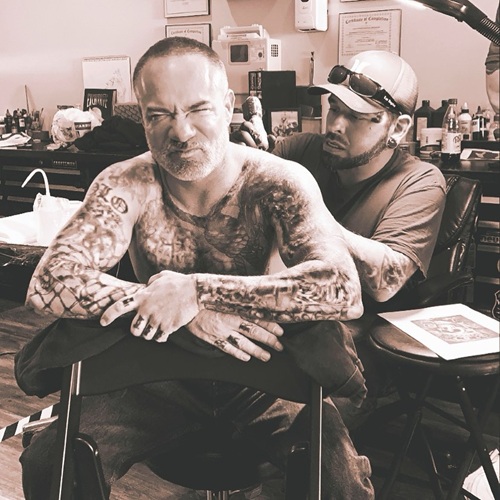
Pain is personal, but tattoo veterans often describe common sensations depending on the placement. Getting inked on bony areas can feel like a deep scratch combined with vibrations that hit your bones. People often compare it to dental drilling—sharp, echoing, and persistent. The ribs and spine often get this comparison. On the other hand, areas like the outer forearm or calf tend to feel like dull scratching or constant pressure, definitely uncomfortable but not unbearable. Many people even chat or scroll through their phones during these sessions.
Preparing for Tattoo Placement Pain: How to Make It Easier

When you’re getting your first ink, you’ll need this first tattoo guide. You’ll also need to do these things:
- Get a full night’s sleep the day before: A well-rested body can handle pain and stress better. Sleep helps regulate your nervous system, directly affecting your sensitivity during the tattoo process. People who come in tired often say they feel twitchier and more overwhelmed during the session.
- Eat a balanced meal beforehand: Don’t show up on an empty stomach. Low blood sugar can make you dizzy, nauseous, or more pain-sensitive. A good meal with protein and carbs a couple of hours before your appointment helps keep your energy stable.
- Stay well-hydrated throughout the day: Hydrated skin is healthier, and it takes ink better. Drink water in the hours leading up to your appointment. It won’t make the pain disappear, but it can reduce irritation and help your body stay calm under stress.
- Avoid alcohol and caffeine 24 hours before: Both substances thin the blood. That might not sound like a big deal, but it means you’ll bleed more during your tattoo, which can blur the ink and prolong healing. Plus, alcohol messes with your body’s ability to manage pain.
- Wear the right clothing for your tattoo placement: Choose loose, breathable clothes that give your artist access to the area. If you’re getting your thigh or ribs tattooed, tight jeans or a stiff bra strap can make things harder for both of you.
- Communicate with your artist before and during the session: Let them know if you’re anxious, have low pain tolerance, or need breaks. Most artists are supportive and would rather you speak up than silently struggle through the session.
What’s the Verdict?
Your tattoo is permanent, but the pain isn’t. That said, where you get it placed can totally shape your tattoo experience. Use the male and female tattoo pain charts as a guide, not a rulebook. Everyone has different thresholds, and what’s rough for one person might be manageable for you.
Start with a less painful area if you’re nervous, or go for the ribs if you’re feeling bold and have a good artist you trust. Either way, knowing what to expect gives you confidence and makes for a smoother, less stressful tattoo journey. Also, decide what kind of ink you want to get! We recommend these tiny tattoos as a start!

